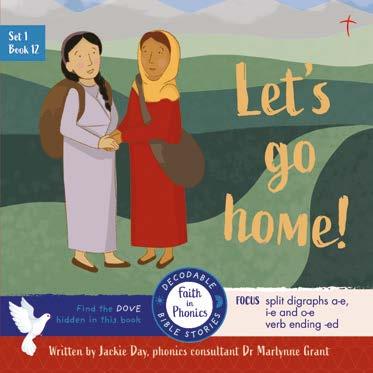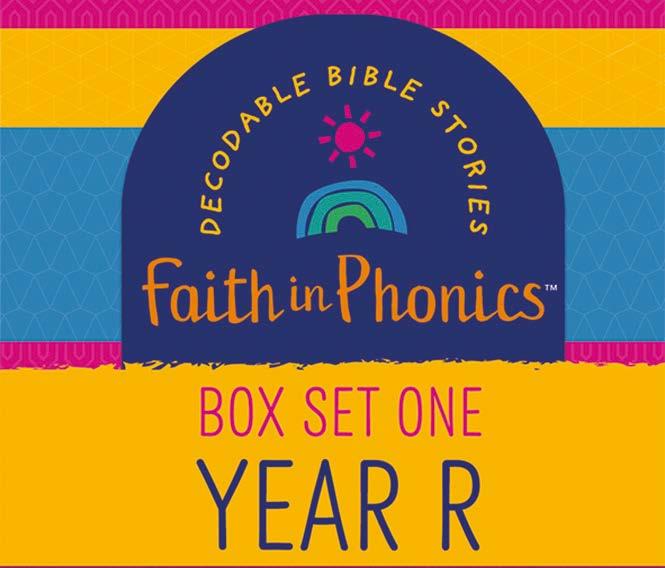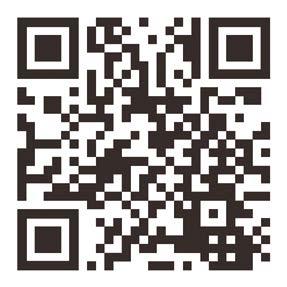CHRISTIAN BOOK PUBLISHING AND BOOK SELLER


A GUIDE TO READING
The purpose of the Faith in Phonics series is twofold.
Firstly, the books will enable young children to read Bible stories for themselves – perhaps for the first time. It is our hope that, with adult support, the reflections and questions provided at the end of each story will help children to apply the stories to their lives.
The second purpose of the series is to support the development of children’s reading when taught using systematic synthetic phonics (SSP). The phonics used and developed through the Faith in Phonics books meets the expectations for England of the government policy paper, The reading framework (2021), the Ofsted Inspection Framework (2021), the National Curriculum (2014) and the Phonics Screening Check.
Research shows systematic synthetic phonics to be the most effective way of teaching reading. Children are taught the 42+ sounds (phonemes) of the English language and the letters (graphemes) that represent them (letter-sounds or grapheme-phoneme correspondences).
To decode words, children are taught to blend (synthesise) the sounds together to read the words. Some common words (such as the, you, come) are not easily sounded out. They are called ‘tricky words’. Tricky words are best taught by identifying the ‘tricky’ part, learning it, sounding out and blending as usual. A book that includes only words containing the lettersounds a child has learnt so far, plus a few tricky words, is called a decodable text.
There are many phonics programmes, each supported by a range of decodable texts exactly matching that particular programme’s phonic progression. The Faith in Phonics series aims to supplement these decodable texts, providing a faith focus and extra reading practice. It takes account of Phases 2 to 5 and the Steps and Stages of the range of programmes validated by the Department for Education. Whilst it cannot exactly match the phonic progression of every programme, each book is clearly labelled to show which sounds or spellings of those sounds has been covered, with the phonic focus clearly displayed on the front cover. (See the Table for more details.)
Set 1 Books cover the 42+ letter-sounds (grapheme-phoneme correspondences) with a few common alternative spellings and are suitable from Reception.
Set 2 Books cover all the main alternative spellings and are suitable from Year 1. A child who can read all of these will be well equipped to meet the national expectations in England for the Phonics Screening Check (taken at the end of Year 1).
Both sets of books are also suitable for older children who are catching up with reading, or just want a Bible story they can read easily for themselves.
Tricky words have been kept to a minimum and are explained in each book, as are the names of Bible characters and places.
Written by Jackie Day Phonics consultant Marlynne Grant
| CHRISTIAN BOOK PUBLISHING AND BOOK SELLER | 3 www.qaeducation.co.uk |
Faith in Phonics® copyright © Redemptorist Publications 2023 redemp ori s t publications ®
Conventions used in the books
In all the books, text in small print is for the adult to read and text in large print is for the child to read.
In Set 1 Books, letter-sounds to practise from each book are on the back cover. Once digraphs (twoletter sounds) are introduced, alphabet sounds are not included as these are assumed to be known. The inside front cover is a practice page to use before reading.
Sounds in the practice words are separated by a small gap (e.g. w i ll, h e l p, r ai n). Phonics helps children to sound and blend words as easily as possible. Thus we may not distinguish between the /z/ and /s/ sound in words like has, is, and his because these words are often read before the /z/ sound has been learnt. It is easier for a child to see the letter s and modify their pronunciation to get the word. Indeed, the exact number of sounds (or phonemes) cannot be fixed because of regional variations in pronunciation. Very often children sound out a word and ‘tweak’ (or modify the pronunciation) to say the word in their own regional accent. For example, the letter a in last says /a/ in some regional accents and / ar/ in others. The letter u in but says /u/ in some regional accents and short /oo/ in others. The letter e in the sounds like /u/ and is called a schwa sound. A schwa is a vowel sound in an unstressed syllable, where a vowel does not make its long or short sound. It is softer and weaker but similar to the short /u/ sound. Clearly letters do not actually ‘say’ sounds, but it is a simple way to talk about grapheme-phoneme correspondences. In reading, the letters do tell us what sounds to say. Strictly, in phonic terms, letters represent sounds.
Each syllable in a two syllable or polysyllabic word is indicated by a change of colour. Words that start with the letter a where it is not pronounced as a clear /a/ sound (such as away and again) do not have a change of colour as they are probably easier sounded out all through the word. Children
can just sound the letter a as a clear /a/ and then modify their pronunciation as they blend.
Some words have what is called an ‘open syllable’ It is open because the vowel sound is long and the syllable is not closed by a consonant (which would keep the vowel sound short). For example, be/gan starts with an open syllable and the letter e is a long vowel sound. In the word beg/gar, the first syllable is closed by the letter g and the letter e is a short vowel sound. Such words have what is called a ‘closed syllable’. To help young readers, long vowels in open syllables are underlined on the practice page (but not in the stories). A simple rule for children is, “if the short vowel sound doesn’t work, try the long vowel sound.”
The tricky part of each tricky word is underlined and explained. These words should be sounded out and blended as usual once the tricky part has been learnt. Again, some adaptation may be needed to account for regional accents. For example, the wh in words such as ‘when’ and ‘where’ is aspirated in some accents but not in others.
Contractions are explained too on the practice page.
The suffix -ed for the past tense can cause difficulty because it has three sounds, (/e/ /d/ as in shouted, /d/ as in played and /t/ as in jumped Where -ed says a single sound, either /d/ or /t/, it is underlined in the past tense verbs on the practice page.
Towards the end of Set 1, three common split digraphs are introduced. A split digraph is a long vowel spelling pattern in which two vowels are separated by a consonant, e.g. a-e in came. On the practice page, split digraphs are indicated by a loop joining the two letters to remind readers that these letters make one sound.
In Set 2 Books the same conventions are used. The back cover has examples of words used in the book with the sound or spelling of that sound in colour.
| CHRISTIAN BOOK PUBLISHING AND BOOK SELLER | 4 |www.qaeducation.co.uk
Faith in Phonics® copyright © Redemptorist Publications 2023
Using the Faith in Phonics Series
A child who is really struggling will need additional help at home or in school to develop the vital skills for literacy of knowing the sounds and blending those sounds all through the word for reading.
Choose your moment! A tired or hungry child may not be an enthusiastic reader. Many children respond well to a regular time slot when they expect to read (and be read to). Don’t worry if the whole book is not completed in one session.
Check that the child has learnt the sounds or spellings of the sounds covered in the book. For Set 1 Books you could see how fast they can say all the sounds on the back cover.
Ask the child to read the sounds on the practice page near the front of the book and then sound out and blend as many words as are helpful – paying particular attention to any two syllable words which might cause difficulty.
Point out any tricky past tenses where the suffix -ed says a single sound, /d/ or /t/, and try reading the past tense verbs if these are likely to cause problems.
Using the notes provided, explain any tricky words that the child is unable to read ‘at a glance’.
Read the introduction on page 1 and make sure the child is familiar with the names of the Bible characters and any place names. There are notes to help children sound these out as usual.
Then let the child read the story and enjoy the pictures. You may need to contribute to the story by reading some small print yourself in some of the early texts in Set 1.
Finish by reading the reflection and asking the questions.
After reading a Set 2 Book, you could choose a few words on the back cover for the child to read again, particularly if any words contain sounds the child was unsure of. Alternatively, make a game of counting how many words from the back cover the child can read in one or two minutes, either before or after reading the text.
Reading the story again will help the child develop fluency and improve comprehension. But above all, keep the reading session light hearted and enjoyable. Be patient and praise their efforts!
| CHRISTIAN BOOK PUBLISHING AND BOOK SELLER | 5 www.qaeducation.co.uk |
Faith in Phonics® copyright © Redemptorist Publications 2023
Tips to help with reading
If the child gets stuck on a word, slow down and encourage them to say the sounds. Make sure that pure sounds are used. Remind them of any letter-sounds they have forgotten and ask them to speed up the sounds so that it’s easier to hear the word. If they find this hard, say the sounds faster yourself and ask whether they can hear the word. If not, say the word for them. If there are too many words the child can’t read, try an earlier book in the series. Children move through several stages when learning to read.
♦ At first they sound out (out loud) and say the word
♦ Later they can be encouraged to sound out in their head and say the word.
♦ And finally they just say, read ‘at a glance’ (no need to go on sounding out if you recognise the word!)
Difficulty with two syllable and polysyllabic words
Some children have no difficulty blending all through a word like ‘bandits’. Others may need more help. If they do, cover the second syllable with a finger or piece of paper and encourage the child to sound out each syllable separately before blending the syllables. Book 4 in Set 1 gives plenty of practice in reading two syllable words.
Difficulty reading words with suffixes (-s, -es, -ed, -ing, -er, -est)
Again, some children have no difficulty adding -s to a word for a plural or present tense verb. For those that need help, cover the -s with a finger so that they can read the root word before adding the /s/ sound. Words ending in -ing, -er, -es and -est can be treated as two syllable or polysyllabic words as described above.
| CHRISTIAN BOOK PUBLISHING AND BOOK SELLER | 6 |www.qaeducation.co.uk
Faith in Phonics
DECODABLE
| CHRISTIAN BOOK PUBLISHING AND BOOK SELLER | 7 www.qaeducation.co.uk |
1 Books covering Initial Code and a few alternative spellings,
from Reception
Title Phonic Focus New Tricky Words (excluding names of people and places) Faith Message Pages Sentences Words 1 God is (The nature of God) alphabet, ck I The Bible tells us what God is like. God is love. 8 10 37 2 Ham’s dad (Noah builds an ark) alphabet, ck of, the God keeps his promises. 12 30 104 3 Up he jumps! (Peter and John heal the lame man) alphabet he, me, no, go, gold, to, into, can’t We can pray for people who are ill. 12 29 116 4 Bandits! (The Good Samaritan) 2 syllable words was Our neighbour is anyone who needs our love. 12 25 120 5 A rash lad (The Prodigal Son) sh, ch, th, ng when, give, began No matter what we do, God welcomes us back when we come to him. 12 26 150 6 Afraid in a boat (Jesus calms the storm) ai, ee, ie, oa, ue you, are, be, we, they, said With Jesus we don’t need to be afraid. 12 32 164 7 A Star for a King (The wise men visit Jesus) ar, er, or some, come, were, so Jesus is the greatest gift. 12 26 168 8 Contest on Mount Carmel (Elijah and the prophets of Baal) oi, ou, oo, oo two, put, altar, built God is powerful. We can say sorry to God. 12 34 182 9 Can You Hear Me? (Hannah prays for a baby, Samuel hears God) air, ear she, son, what, stitch, didn’t We can listen to God and be part of his plan. 12 36 186 10 Will Dan Pray? (Daniel in the lion’s den) alternatives: ay, oy, ow my, oh, your, lions, live, do God protects us. 12 29 187 11 Zac the Greedy Taxman (Zacchaeus climbs a tree to meet Jesus) y saying ‘i’ or ee, ow saying ou one, have, house, going, today God wants us to be the best people we can be. 12 29 190 12 Let’s go Home! (Story of Ruth) all letter-sounds + split digraphs: a-e, i-e and o-e there, by, all, told God loves families and wants us to look after each other. 12 30 212 Old Testament New Testament Faith in Phonics® copyright © Redemptorist Publications 2023
BIBLE STORIES Set
suitable
.
Jackie Day
BSc, MBChB, PGCE
Jackie is a retired primary school Special Educational Needs Coordinator, currently involved in supporting Dr Marlynne Grant with training for her phonics programme, Sound Discovery®. Whilst raising her three daughters, Jackie ran her local Sunday school and discovered a love of teaching and completed a PGCE.
Working part-time Jackie was able to focus on working with children with Special Educational Needs, some of whom were starting Junior School in Y3 unable to read. In 2000 Jackie met Marlynne and was introduced to her systematic synthetic phonics (SSP) programme. Sound Discovery® transformed Jackie’s work and she began writing stories and other texts to supplement the programme.
Under the English Hubs training programme, Jackie delivered Sound Discovery® phonics training to schools with Marlynne. During the pandemic lockdowns they worked collaboratively on an electronic version of training and produced a set of phonics videos, each of which ended with a decodable story.
PHONICS CONSULTANT Dr Marlynne Grant

BSc, Cert Ed, M Ed Psych, PhD, AFBPsS, C Psychol. REGISTERED
AS EDUCATIONAL PSYCHOLOGIST WITH HCPC (HEALTH & CARE PROFESSIONS COUNCIL)
Marlynne has worked as an Educational Psychologist for many years with various Local Authorities. Marlynne is a trained teacher with a PhD from the Education Department, Cambridge University and a professional Masters qualification in Educational Psychology from Exeter University.
Marlynne conducted an eight-year research study into systematic synthetic phonics (SSP). The study helped to inform government policy and featured in the House of Commons report Teaching Children to Read (2005). Marlynne has been instrumental in conducting further studies that have yielded outstanding results. The studies were especially effective with vulnerable groups, including the disadvantaged and those with special educational needs. The results of her research are referenced in the government policy paper, The reading framework, Teaching the foundations of literacy, (2021).
Marlynne wrote the phonics programme Sound Discovery® which is validated by the Department for Education as a complete SSP programme. She also wrote the ‘daughter’ programme Rapid Phonics with Pearson Education. Marlynne was the Language Consultant on the popular Easy words to read children’s story books published by Usborne.

| CHRISTIAN BOOK PUBLISHING AND BOOK SELLER | 8 |www.qaeducation.co.uk 6 ABOUT THE AUTHOR

Faith in Phonics
Box Set 1 Year R
12 Book Box Set
Code: 1911 ISBN: 9780852316221
Introductory price: Only £29.95!
• Written by Jackie Day
Exclusive to RP, Faith in Phonics®, is a series of educational reading aids for early readers. Faith in Phonics® reading resource, not only inspires children to engage in Bible stories, but encourages early readers to read.













Written by leading educational experts Jackie Day & Dr Marlynne Grant, these books have been written using Dr Grant’s Sound Discovery® phonics programme, which has proven results helping young children improve their reading skills.


We know how important it is for early readers to have a breadth and choice of resources and the importance of a systematic synthetic phonics system, therefore we’ve produced this must have educational reading series Faith in Phonics® .
Box Set 2 Year 1




12 Book Box Set
Code: 1912 ISBN: 9780852316238
Pre-order now: Only £29.95!

NEW
www.rpbooks.co.uk 01420 88222 customercare@rpbooks.co.uk
Today! Bulk discount available 5% off on 5 -10 sets 10% off on 11+ sets redemp ori s t publications
Order
OUT NOW!
soon 2023 More information can be found on our website!
• Phonics Consultant Dr Marlynne Grant
Coming

























